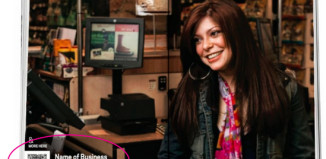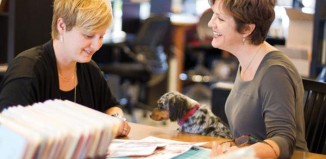Earlier this year I was shopping for some art work for my office when I stumbled across one of those cliché-type quotes nicely framed and ready for purchase. Unlike all the other overdone and worn-out quotes on love and happiness that seem to crowd the store shelves, this one actually grabbed my attention. “Home is where your story begins,” read the framed plaque. And I could not agree more.
Our home, the family that we were born or adopted into, is where our own stories start. And it is where the themes that help shape us for better (or worse) first begin to take root– themes such as trust, love and safety or their painful counter- parts of loss, betrayal and neglect. And often these very themes are the ones that find their way into our lives as adults–in the relationships and the families we create for ourselves.
Like roles in a narrative, we play certain roles in our original families, and it is through these roles that our personalities often first find expression. What role did you play in your family drama? Were you more quiet and shy or gregarious and outspoken? Maybe you were the comedic relief, always keeping others laughing and distracted from the gravity of any situation. Did you tend to jump in the middle of fights or try to create the peace? Perhaps you were the “hero” who could do no wrong or the “rescuer” who saved others from their own problems. Or perhaps, depending on the situations, you could take on different roles–anything to help you survive the crazy drama!
Our original stories are written within a certain environment–an emotional environment. Again, think back to your original family. What kind of environment did you grow up in? Was your home a safe place to be yourself, or were the dark confines of the closet the only safe place to be? What kind of boundaries existed? Were words used to encourage and support or wound and scar? How were anger and conflict expressed in your home? Or were they even allowed?
As any student of history will tell you, history often repeats itself. Our own history is no different. The roles and themes we grew up with often repeat themselves later in our lives. Look no further than your current relationships and families for evidence of this. Consider romantic relationships. The coupling process involves, albeit unconsciously, the reenactment of the original dramas we grew up with. We choose current partners that resemble our parents or caretakers so that we can recreate unresolved problems of the past in the present. And this reenactment is dramatized even more when the two partners take on opposite roles as is often the case (i.e., the peacemaker couples with the conflict creator). The goal of this reenactment is to finally get from our partner what we did not get (or get enough of) in our own families (e.g., recognition, respect, encouragement, etc.) a good question to ask is, “how does my relationship with my partner resemble the relationship I had with my parents or the relationship between my parents?”
We are first exposed to parenting by our families. Our caretakers served as a model (for better or worse) on how to nurture, support and discipline. And it is not uncommon to use their parenting techniques for our own self-care. How our parents took care of us as children often influences the way we take care of ourselves as adults. Another good question to consider is, “how do the dynamics in my current family, the one I have chosen to create for myself, resemble the dynamics of the family that was chosen for me?” Knowing the answers to these questions helps create an awareness about our histories that connects the past to the present. And by knowing our history, understanding where it is we come from, helps us see where we most need to go with our own relationships and families. And although we cannot change our original stories, we can certainly take from them what we want, edit out the parts we do not want to repeat, and create a new narrative, one of hope and renewal.
For many gay men, however, this is a rather daunting task. Many in our community come from families where their identities have been shamed and discounted or where they have been banned from their tribe because of who they are and who they love. Their early theme is one of basic emotional survival from the hurt, pain and rejection. I think in part this is what drives some in the gay community to engage in addictive and self-destructive behaviors. After leaving their family, they become the walking wounded among us, seeking immediate relief in an addiction, yet really hoping for what we all need– meaningful connections.
“Home is where your story begins” reads the plaque, but it certainly is not where it ends, for stories are organic and always evolving. And your story is uniquely yours–yours to write, to tell and to share.
Did You Know?
A 2007 study found that 52% of gay men want to have children, while 16% of gay men currently have children. The same study showed that 3.3% of adopted children in Texas are living with gay or lesbian parents.
According to the Gay Law Report, public support for gay marriage has increased about 1% a year for the past two decades.


































